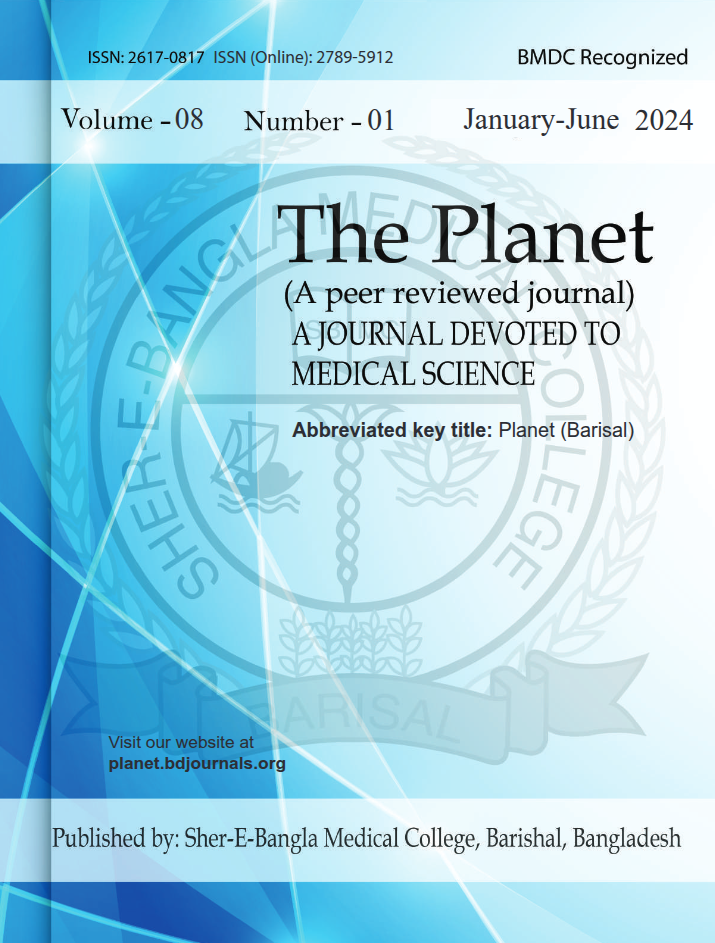Outcome of Induction of Labour in Postdated Pregnancy - A Clinical Study in a Tertiary Care Hospital
Publiée 2024-03-17
Mots-clés
- Postdated Pregnancy,
- Induction of Labour,
- Bishop Score,
- Caesarean Section,
- Perinatal Outcome
(c) Copyright The Planet 2024

Ce travail est disponible sous la licence Creative Commons Attribution 4.0 International .
Comment citer
Résumé
Background: Post-dated pregnancy is associated with increased maternal and perinatal risks. Timely induction of labour can reduce these risks, but outcome vary depending on maternal, fetal, and cervical factors. This study aimed to assess maternal and neonatal outcomes following induction in postdated pregnancies at a tertiary hospital in Bangladesh. Methods & Materials: A prospective observational study was conducted on 100 postdated pregnant women at Rajshahi Medical College Hospital from February to August 2021. Data on demographic characteristics, induction methods, delivery outcomes, and neonatal status were collected. Statistical analysis was performed using SPSS v23, with significance set at p<0.05. Results: Vaginal delivery occurred in 60% of participants, while 40% required caesarean section. A favorable Bishop score significantly increased the likelihood of vaginal delivery (p = 0.006). Fetal distress (55%) was the most common caesarean indication. Most women (90%) delivered within 24 hours of induction. Neonatal outcomes were favorable, with 80% of babies born healthy and only 2% requiring NICU admission. No stillbirths occurred. No significant differences were observed in perinatal outcomes between 40completed weeks and 41 completed weeks of gestation. Conclusion: Induction of labour in postdated pregnancy is safe and effective when guided by cervical status and continuous fetal and maternal monitoring. The findings support early induction before 42 weeks to prevent complications without increasing caesarean risk.



